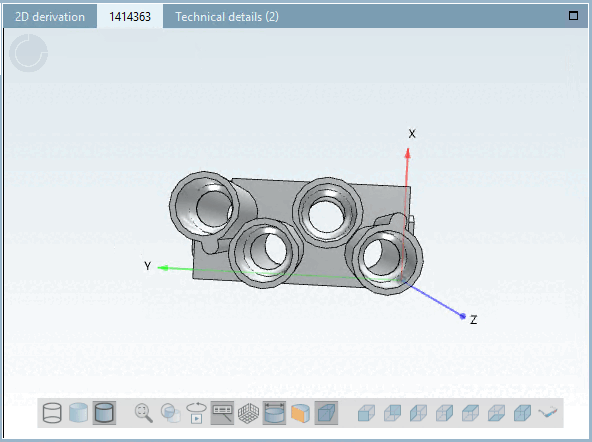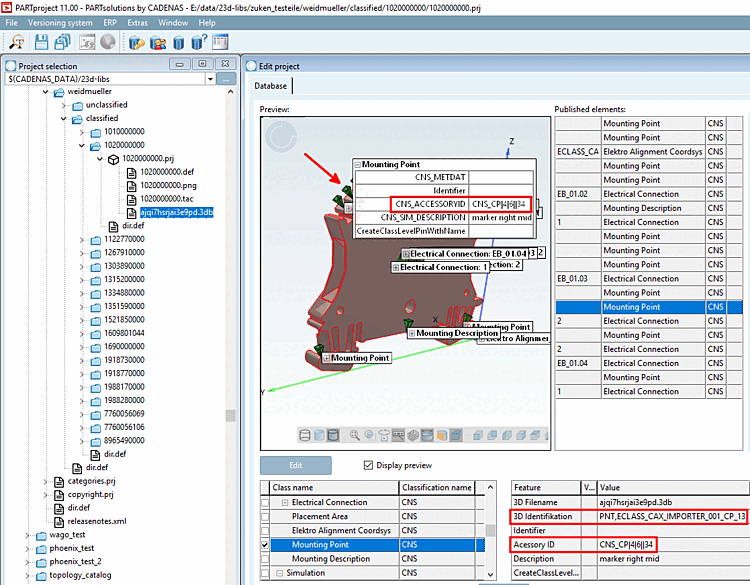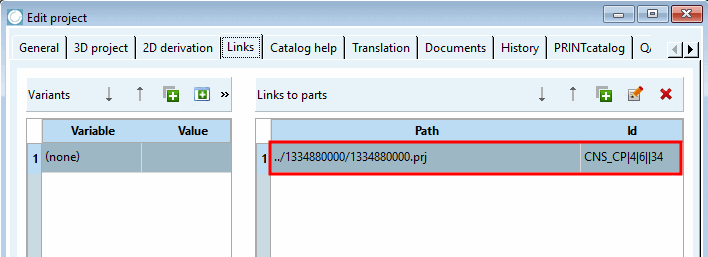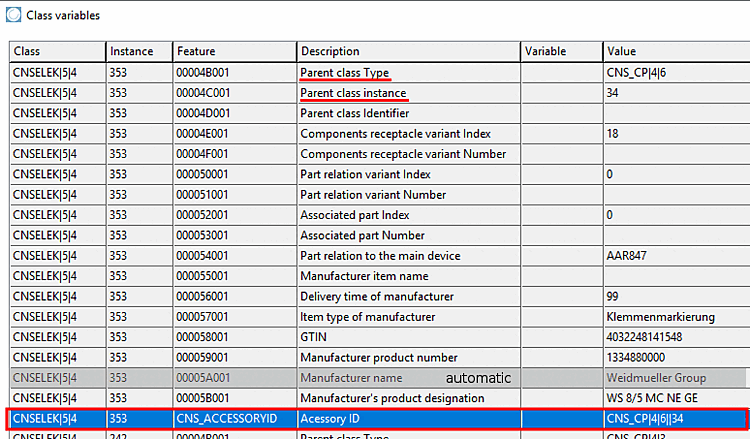Accessories are defined in two sections. On one side is the usual PSOL accessory solution ( PARTproject -> tab page References [Links] -> Links to parts ) and on the other side the mechanism that links the accessory data with the electrical classification.
Example: Phoenix Contact plug with 4 crimp connections. In principle, a whole series of different pins with their own article number can be inserted into each crimp connection. In principle, these can be different for each connection.
Set all the mounting points required for the accessories on the base part.
Set the Mounting Point class (CNS_CP|4|6) on each of the connection points.
Assign a unique value to the Accessory ID feature using the following syntax.
CNS_CP|4|6||<Instanz>
Dialog "Class variables" -> Class Mounting Point (CNS_CP|4|6) -> Characteristic "CNS_ACCESSORYID" here with example value "CNS_CP|4|6||34"
"Published Elements" dialog -> "Mounting Point" class -> "Accessory ID" feature here with example value "CNS_CP|4|6||34"
Set in PARTproject on the References [Links] tab page under Links to parts, set an entry with the path [Path] to the accessory part and Id that has exactly the same value as the CNS_ACCESSORYID characteristic under class Mounting Point (CNS_CP|4|6).
Fill in the essential information for the accessory part in CNSELEK|5|4.
The Parent classType feature is given the name of the corresponding classification.
The Parent class Instance characteristic receives the instance of the corresponding classification.
The CNS_ACCESSORYID feature is assigned the same unique identifier string as the base part and is thus linked to the PSOL accessory path.
CNS_CP|4|6||<Instanz>
One possible form of CNS_ACCESSORYID is the composite string of Parent class Type and Parent class Instance.
Details on this can be found under Section 5.12.9.21, “Accessory parts (Associated Part [CNSELEK|5|4])”.







![[Note]](https://webapi.partcommunity.com/service/help/latest/pages/jp/3dfindit/doc/images/note.png)